Mesh operations are functions that process the incoming mesh information in an InstaLOD profile. Mesh operations can run in parallel or sequentically enabling the creation of complex and powerful workflows.
¶ Creating a Mesh Operation
When a new profile is created, a single mesh operation is added by default based on the chosen operation in the New Profile screen. To create a new profile go to File > New Profile from the main menu.
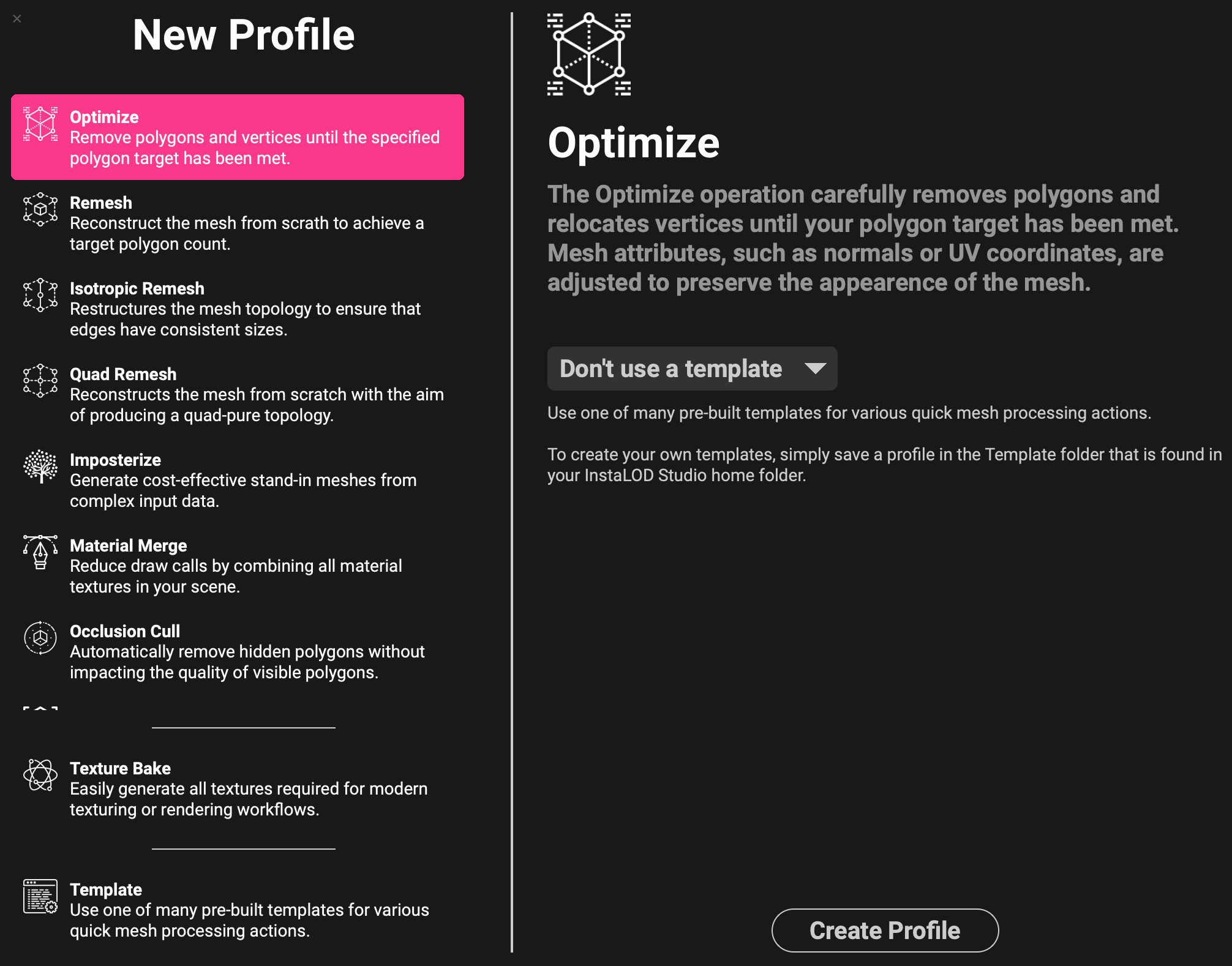
¶ Adding Additional Mesh Operations
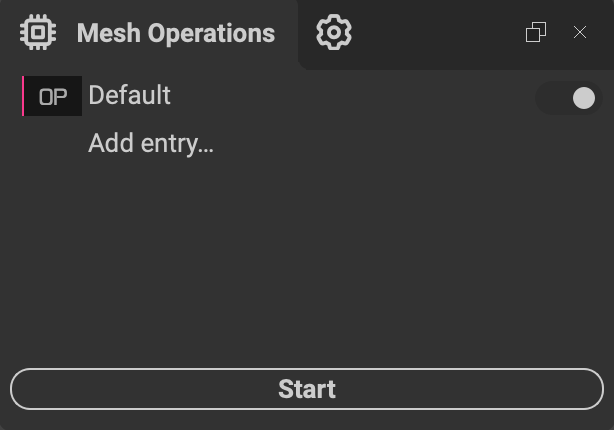 The
The Mesh Operations panel displays all mesh operations for the active InstaLOD profile.
To add an additional mesh operation to the profile, click on the Add entry... area below the listed mesh operations. A name can be given to the new entry.
By default the name of the mesh operation is appended as a suffix to any processed mesh data. This behavior can be adjusted by toggling the Append Name As Suffix option in the Profile Settings panel.
To learn more about InstaMAT Studio's interface and pannels, please read our article here.
¶ Overview of Available Mesh Operations
The following is an overview of the available mesh operations in InstaLOD Studio. To learn more about each operation in particular, please read its dedicated article.
¶ Delivery Optimization
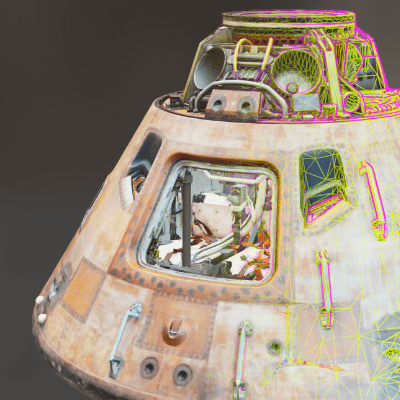 🆕 New in InstaLOD 2024
🆕 New in InstaLOD 2024
The Delivery Optimization opearation can be used to automatically process a scene for display on the web or AR and MR use cases. It performs a wide-array of algorithms and analysis on the scene to enable strong compression while maximizing the visual quality.
learn more about Delivery Optimization here.
¶ Optimize
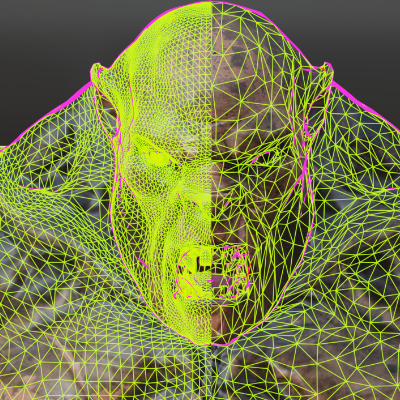 The
The Optimize operation carefully removes polygons and relocates vertices until your polygon target has been met. Mesh attributes, such as normals or UV coordinates, are adjusted to preserve the appearence of the mesh.
Learn more about the polygon optimizer here.
¶ Remesh
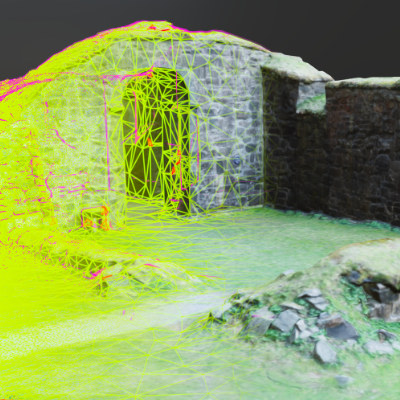 The
The Remesh operation reconstructs the mesh from scratch. In the process, it reduces the topological complexity of the mesh while preserving the visual outcome.
UV coordinates are automatically created and the original mesh appearance is transferred onto the reconstructed mesh using InstaLOD's texture baker.
Learn more about the remesher here.
¶ Isotropic Remesh
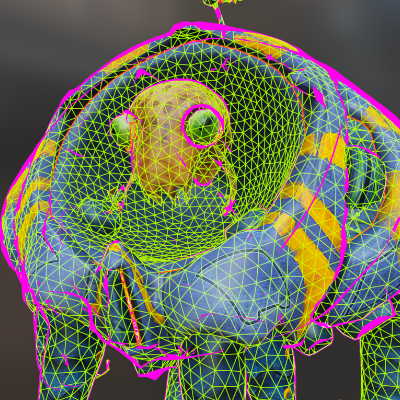 The
The Isotropic Remesh operation restructures the mesh topology to ensure that edges have consistent sizes. Mesh attributes, such as normals or UV coordinates, can be optionally preserved through the process.
Learn more about the isotropic remesher here.
¶ Quad Remesh
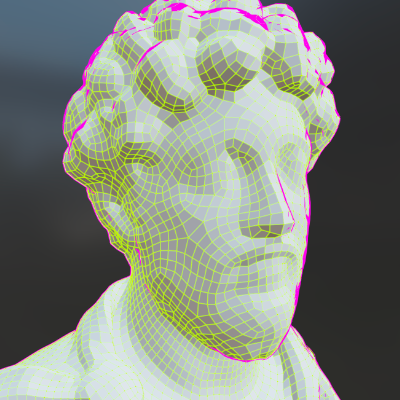 The
The Quad Remesh operation reconstructs the mesh from scratch with the aim of producing a quad-pure topology.
Learn more about quad remeshing here.
¶ Imposterize
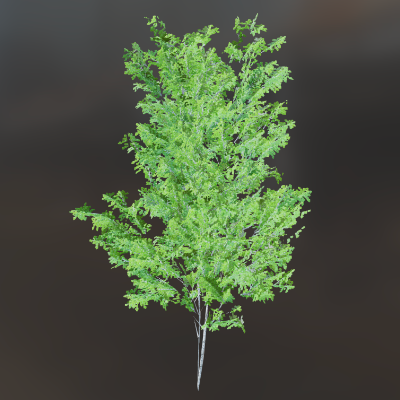 The
The Imposterize operation generates a stand-in mesh for foliage rendering. Foliage meshes are typically not well suited for optimization techniques that would reduce the polygon count as that would ultimately lead to the removal of elements like leaves.
The operation supports the creation of a wide variety of different imposter types.
Learn more about imposterization here.
¶ Material Merge
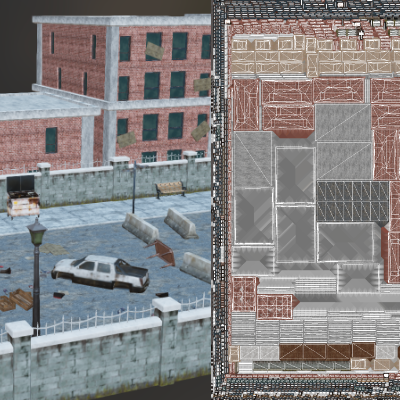 The
The Material Merge operation reduces draw calls by combining all material textures in your scene into a single material texture. In the process, the operation recalculates the UV layout for all objects in your scene while efficiently grouping identical meshes.
Learn more about material merging here.
¶ Occlusion Cull
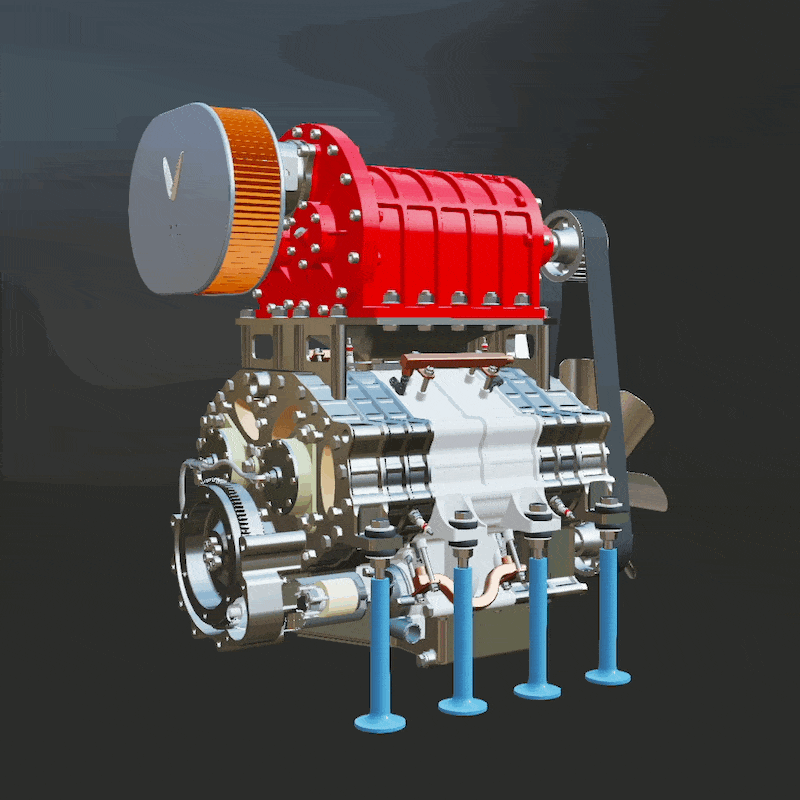 The
The Occlusion Cull operation is capable of removing polygons that are not visible to the observer. Occlusion Culling is an excellent tool to reduce the polvgon count of complex assemblies without impacting the quality of visible polygons. InstaLOD supports automatic detection and culling of interior polygons, alternatively, manually placed cameras can be used.
Learn more about occlusion culling here.
¶ UV Unwrap and UV Pack
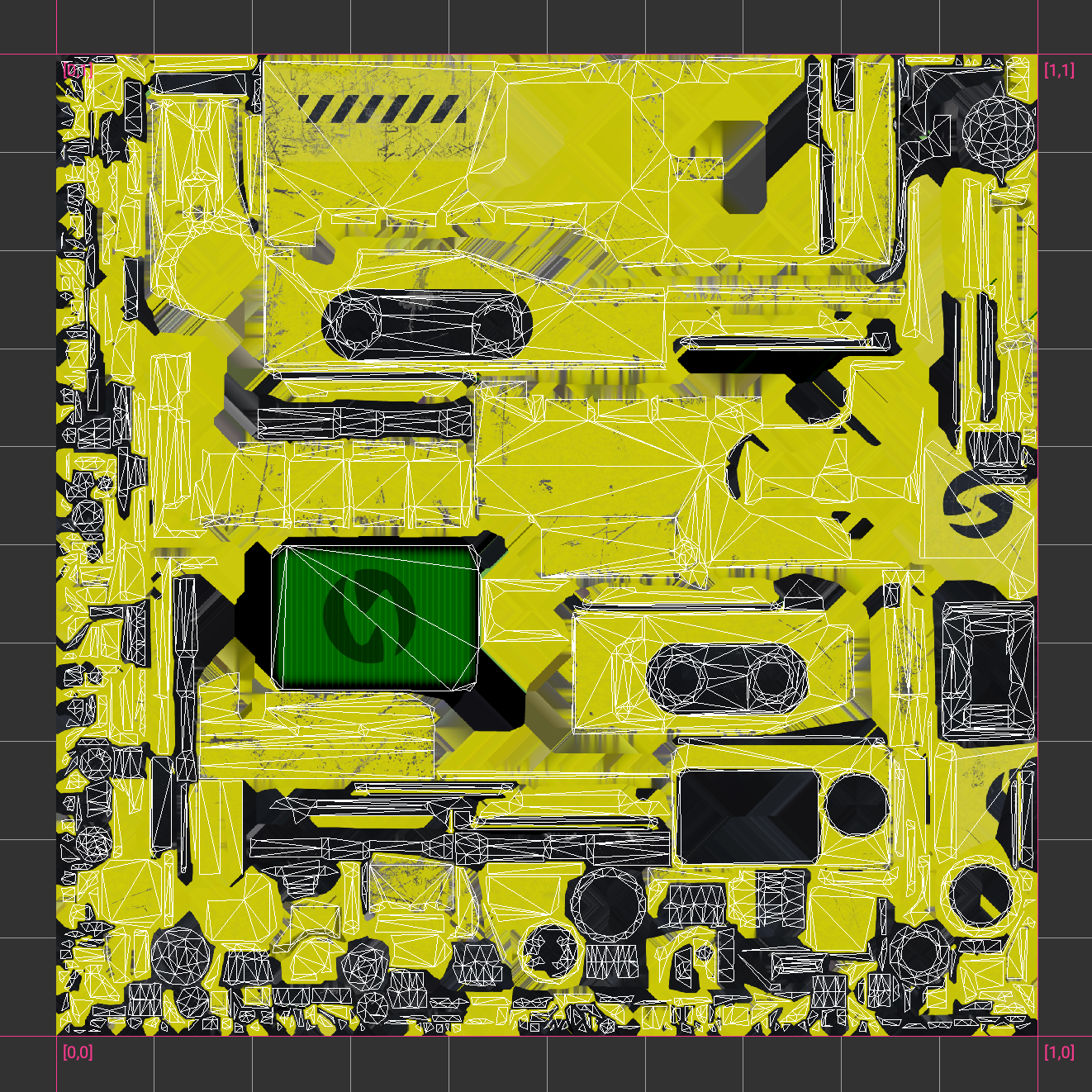 The
The UV Unwrap operation automatically generates a UV parameterization and layout for the input mesh. The resulting UV layout is guaranteed to be free of overlaps. Multiple modes that provide the targeted results depending on the input mesh are available.
The UV Pack operation repacks the existing UV parameterization for the input meshes into a new layout. All meshes that are part of the current execution will be packed onto a single atlas. The 'Shell Rotation' feature gives precise control over how the UV shells are rotated to be packed onto the resulting atlas.
Learn more about UV unwrapping and packing here.
¶ Mesh Toolkit (MTK)
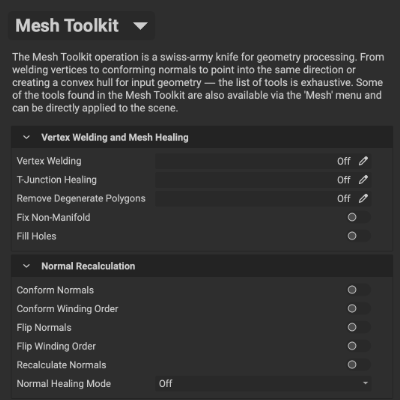 The
The Mesh Toolkit operation is a swiss-army knife for geometry processing. From welding vertices to conforming normals to point into the same direction or creating a convex hull for input geometry - the list of tools is exhaustive. Some of the tools found in the Mesh Toolkit are also available via the 'Mesh' menu and can be directly applied to the scene.
Learn more about the Mesh Toolkit here.